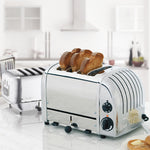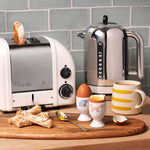Choosing Beans
There are two main types of bean - Arabica and Robusta. The roast will affect the strength and flavour of the coffee. Try beans from around the world - as with wine, the soil, climate and cultivation methods all affect the taste - from mild and mellow to rich and dark.
The Grind
Grind your beans just before you make a coffee - this means you can control the grind size depending on the type of coffee you're making (espresso requires a fine grind), and gives the beans less time for CO2 to escape, meaning a much more flavoursome coffee.
Water
The perfect temperature for brewing coffee is just below boiling point; boiling water will burn the ground beans and will taste bitter, whereas a lower temperature won't extract the oils or flavour.
Dosing and Tamping
Compacting the coffee firmly and uniformly (not too tightly) forces the water through the coffee grounds in a way that extracts the best flavour. Tamping too hard will stop water flowing through. A good barista will tamper by pressing the grounds gently without tapping the filter holder, then twisting slightly to 'polish' the surface of the compacted coffee.
Frothing or Steaming
Steaming or frothing introduces tiny bubbles of air into the milk, giving it a velvety texture. You will produce better, hotter frothed milk if you use a stainless steel jug. For best results use full-fat, cold milk - the higher the fat content, the lighter the froth will be.
The Cup
Coffee should always be served in a warm cup - this will keep the coffee hotter for longer and enhance the aroma. An espresso shot in particular will get cold very quickly if poured into a cold cup.











